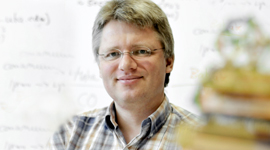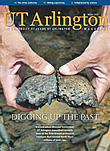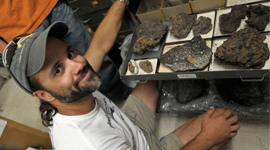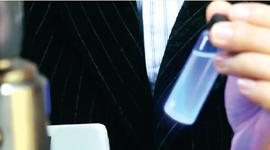A new way to fly
Heat-resistant composites could launch hypersonic aircraft
Imagine traveling in an airplane at hypersonic speed—faster than 3,400 miles per hour. Chemistry Assistant Professor Peter Kroll believes that within 30 years such aircraft will be a reality, although he doesn’t predict an accompanying tourism boom.

Dr. Peter Kroll is developing materials to withstand the extreme temperatures of hypersonic flight.
“The hypersonic aircraft would most likely be used by the military or for space travel,” says Dr. Kroll, who is playing a role in its development with a five-year research grant worth up to $500,000.
The award was funded by NASA and the Air Force Office of Scientific Research through the National Hypersonic Science Center for Materials and Structures led by Teledyne Scientific & Imaging. Kroll and two post-doctoral students will develop new ultra-high-performance ceramic composite materials capable of sustaining the extreme temperatures of hypersonic flight. NASA already uses heat-resistant, high-performance materials in rocket nozzles and the space shuttle.
“But a rocket nozzle is used one time,” Kroll says. “For the two or three minutes after the blast, the materials can sustain that. But with a hypersonic vehicle, this extreme environment needs to be sustained much longer. And you want something reusable that doesn’t require an incredibly high amount of maintenance.”
Another consideration is erosion. At hypersonic speed, the wear caused by air reduces the lifetime of the structure. The ceramic composite must be hard and durable enough to withstand this erosion at high speed and high temperature.
Kroll will study materials using multiscale simulation techniques ranging from quantum chemical calculations to multimillion-atom simulations and continuum methods. He believes the materials could be developed within 10 to 15 years. The next step would be to design the aircraft, which could fly coast to coast in about an hour.
But speed-of-flight is only one application. “If we develop materials capable of sustaining super-high temperatures, that could lead to more efficient energy plants in the decades to come,” he says. “The possibilities of how such research benefits society are endless.














